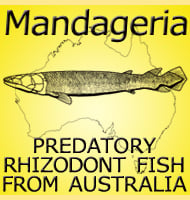In Depth
Chriacus has a curious mix of features since it was a plantigrade quadruped that had hind legs suitable to climbing and fore legs suitable for digging. This has led to Chriacus being described as a raccoon-like animal, a generalist that could adapt its foraging behaviour to search for whatever food was available. This flexibility is reflected in the popular depiction of Chriacus as an omnivore, eating both plants and small animals, as well as possibly raiding nests for eggs and chicks.
Further Reading
– Climbing adaptations in the early eocene mammal Chriacus and the origin of artiodactyla. – Science. 236 (4799): 314–316. – K. D. Rose – 1987. – Virtual endocranial and inner ear endocasts of the Paleocene ‘condylarth’ Chriacus: new insight into the neurosensory system and evolution of early placental mammals. – Ornella C. Bertrand, Sarah L. Shelley John R. Wible Thomas E. Williamson Luke T. Holbrook Stephen G.B. Chester Ian B. Butler & Stephen L. Brusatte – 2019.









